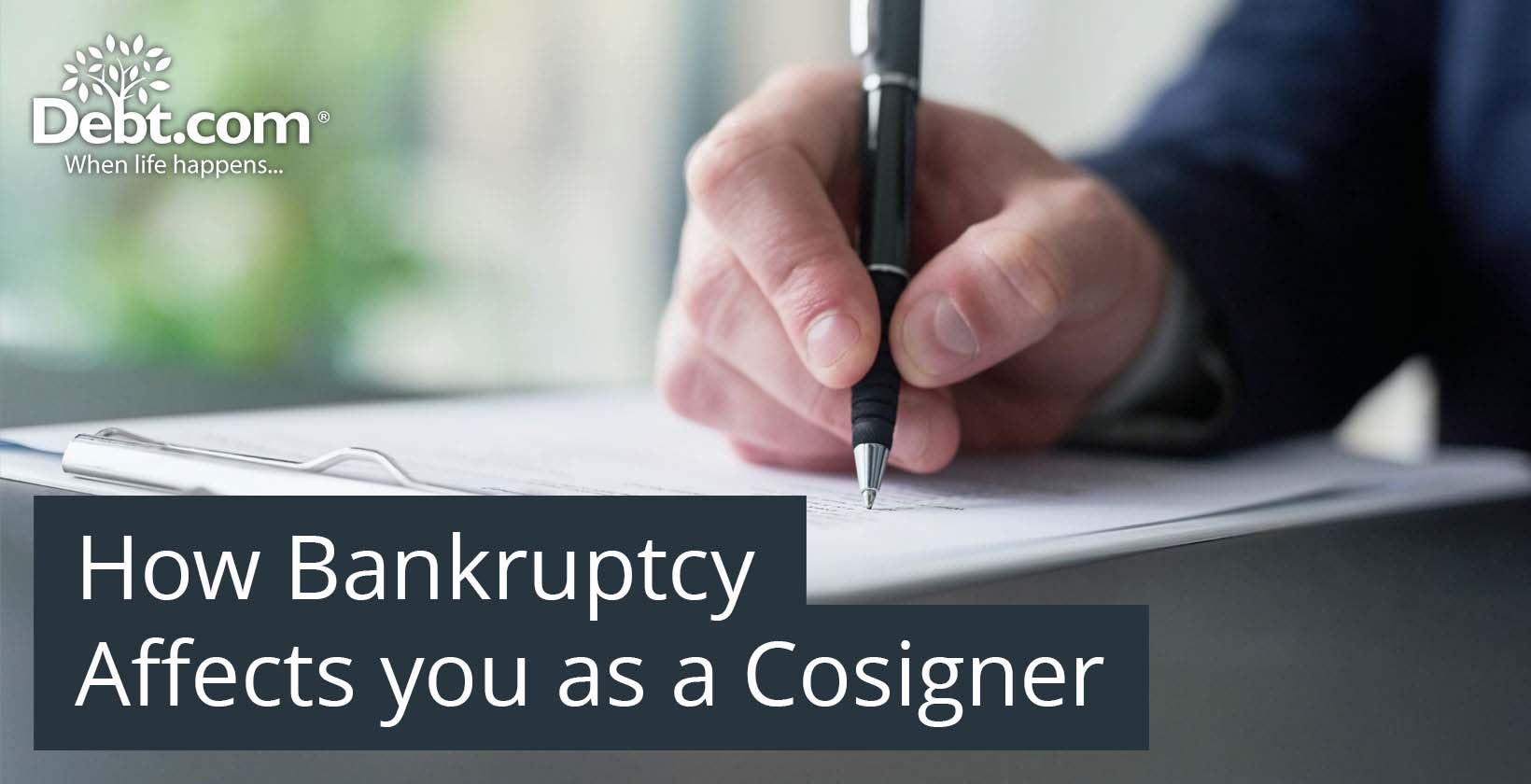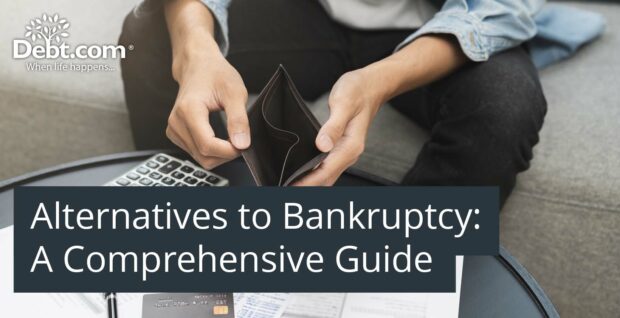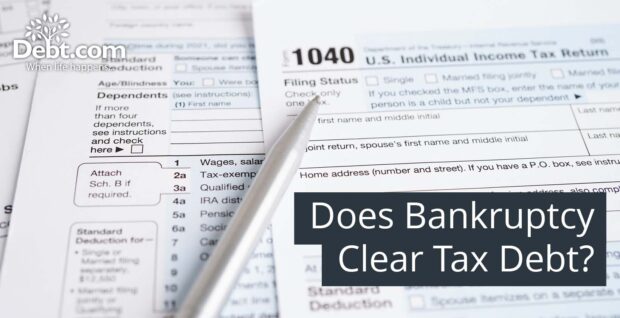

Co-signing a loan is more than a goodwill gesture; it’s a significant financial commitment. When a co-signer files for Chapter 7 bankruptcy, it can have a significant impact on the original borrower and the co-signer themselves.
We’ll explore the legal implications of a co-signer’s Chapter 7 bankruptcy, including how it affects the original borrower’s obligations, the potential consequences for the co-signer, and the available options for both parties in this challenging situation.
Table of Contents
Understanding the Role of a Co-Signer
Co-signing is a decision that demands careful consideration. It’s crucial to remember that co-signing is not merely a formality; it’s a legal obligation. When you co-sign, you assume responsibility for repaying the debt if the primary borrower defaults. While this can help someone secure financing they might otherwise be denied, it exposes you to considerable risk.
When a co-signer files for Chapter 7 bankruptcy, the consequences can be far-reaching. The lender may immediately demand full repayment from you, potentially impacting your credit score and financial stability.
Before you agree to co-sign for someone, carefully consider the risks and take proactive steps to protect your interests. This way you can make informed decisions about co-signing and safeguard your financial well-being.
Worried you may be on the hook? Tell your friend there may be other options.
An Overview of Chapter 7 Bankruptcy
Chapter 7 bankruptcy, often referred to as “liquidation bankruptcy,” offers individuals a fresh start by discharging most unsecured debts. Here’s what you need to know:
- Eligibility: A means test determines if the filer’s income qualifies them for Chapter 7. This ensures that the process is reserved for those who genuinely need relief. It’s a safeguard to prevent misuse of bankruptcy filings and prioritize those in true financial distress.
- Process: Non-exempt assets, such as luxury items or secondary homes, may be sold by a trustee to repay creditors. This process prioritizes fairness while balancing the need for the filer to retain essential assets, such as their primary residence or tools of trade essential for their livelihood. However, understanding what qualifies as “exempt” can vary by jurisdiction, adding another layer of complexity.
- Outcome: Most unsecured debts, like credit cards and medical bills, are discharged. However, obligations like child support, alimony, and (in most cases) student loans are not. These exclusions reflect societal priorities, ensuring critical responsibilities are upheld. Additionally, the discharge of debts does not necessarily eliminate all financial obligations, particularly when joint debts or co-signed loans are involved.
Chapter 7 bankruptcy can significantly ease financial burdens for the filer but often leaves co-signers grappling with the consequences. For co-signers, it’s essential to understand the nuances of how bankruptcy affects shared obligations. Each case can differ based on the terms of the loan, the type of debt, and local bankruptcy laws. This makes it imperative to consult knowledgeable professionals to navigate these complexities effectively.
The Impact of a Co-Signer Filing Chapter 7 Bankruptcy
How Chapter 7 Affects Shared Debt
When a co-signer’s obligation is discharged in bankruptcy, lenders often turn to the remaining co-borrower (you) for repayment. Even with consistent payments, you may face escalated collection efforts or even repossession of secured assets, like a car. This can significantly disrupt your finances, especially if the loan was a substantial part of your budget. You might suddenly face unexpected payment demands or find it difficult to maintain the original loan terms without your co-signer’s contribution.
This risk is particularly concerning for secured loans, where repossession may not fully cover the debt, leaving you liable for the remaining balance. Understanding these potential consequences beforehand allows you to make more informed decisions and plan accordingly.
Legal Protections for Lenders and Borrowers
While the automatic stay in bankruptcy halts collection efforts against the filer, it doesn’t protect co-signers. Creditors can legally pursue you for the outstanding balance, and in some cases, they may increase their efforts to collect. This could involve aggressive tactics, such as escalating collection calls, reporting the debt as delinquent, or initiating legal action to recover the debt. Being unprepared for this can quickly spiral into larger financial stressors that extend beyond the initial loan.
The legal landscape surrounding co-signed debt in bankruptcy is nuanced. While federal bankruptcy laws provide certain protections for filers, co-signers remain exposed to potential liabilities. Understanding these intricacies can prevent costly mistakes and ensure that you remain on firm legal footing.
Credit Implications
Although the bankruptcy won’t appear on your credit report, missed payments or defaults on the co-signed loan will. Additionally, lenders might adjust the loan’s terms, such as increasing interest rates or shortening repayment periods, to mitigate their risk. These changes can make the debt more challenging to manage, further compounding financial strain. Proactively monitoring your credit report and loan status is essential to limit unexpected negative effects on your credit profile.
Creditors’ responses to co-signer bankruptcy can vary. Some may offer revised terms to keep the account active, while others may demand immediate repayment. The unpredictability of creditor actions underscores the importance of maintaining open communication and a proactive stance in managing these debts.
Strategies to Manage the Impact on Co-Signed Debt
Negotiating With Lenders
Proactively engage with the lender to explore alternative arrangements. Many lenders are willing to modify loan terms, such as reducing monthly payments or extending the repayment period, to work with borrowers facing financial challenges.
Openly discussing your situation with the lender can foster a positive relationship and uncover potential solutions you might not have considered. Demonstrating your commitment to resolving the debt, such as offering partial payments while negotiating terms, can be beneficial.
Early engagement can help prevent the situation from escalating. Document all communications and obtain written confirmation of any agreed-upon changes to the loan agreement. This ensures clarity, accountability, and minimizes the risk of future disputes.
Exploring Refinancing Options
If your financial position allows, refinancing the loan in your name can help you regain control. However, ensure you can manage the loan independently before taking this step. For some, consolidating multiple debts into a single loan could simplify repayment, secure a lower interest rate, and reduce overall costs. This approach, however, requires careful evaluation of the refinancing terms to ensure they align with your long-term financial goals.
Seeking Legal Advice
Bankruptcy laws can be complex, and consulting with an attorney can clarify your rights and responsibilities. A legal professional can also assist in negotiations with creditors and help you develop a plan to protect your finances. They might identify exemptions or strategies to shield assets, providing additional security. Moreover, a bankruptcy attorney’s expertise could uncover less obvious avenues of relief or solutions tailored to your unique circumstances.
Building a Financial Safety Net
Establishing an emergency fund specifically for co-signed debts can provide a buffer. This reserve can help you manage unexpected expenses and buy time to explore other solutions. Beyond immediate relief, having this safety net builds confidence and resilience for future challenges. Building such a fund may require reassessing your current budget or cutting non-essential expenditures temporarily, but the long-term benefits are worth the effort.
Common Myths and Misconceptions About Co-Signer Bankruptcy
Myth 1: “Chapter 7 Automatically Wipes Out Co-Signed Debt”
Chapter 7 may discharge the co-signer’s responsibility, but it doesn’t absolve the remaining borrower. Lenders will still pursue you unless the loan agreement explicitly states otherwise. This highlights the importance of understanding the terms of any co-signed agreement, which often include contingencies for situations like bankruptcy filings.
Myth 2: “The Bankruptcy Will Appear on My Credit Report”
The co-signer’s bankruptcy won’t directly impact your credit. However, any delinquencies on the loan will. Proactively monitoring the loan’s status can help you address issues before they escalate into credit score damage. Regular communication with the borrower can also provide valuable insight into their financial health and intentions.
Myth 3: “Creditors Can’t Contact You”
The automatic stay only applies to the filer, not the co-signer. Creditors can still reach out to you for repayment. Understanding this distinction can help you prepare for potential communication and avoid unpleasant surprises. Knowing your rights during these interactions can also reduce stress and improve your ability to handle these situations effectively.
Practical Tips for Protecting Yourself as a Co-Signer
Evaluate Risks Before Co-Signing
Before co-signing, assess your ability to cover the debt if necessary. Consider the borrower’s financial stability and repayment plan, and only proceed if you’re prepared for the potential consequences. Researching alternative options for the borrower, such as secured loans or guarantor agreements, could provide a less risky solution. Consulting a financial advisor could also illuminate options that minimize your exposure to potential financial harm.
Monitor Co-Signed Loans
Stay informed about the loan’s payment status. Setting up alerts or reminders can help you catch issues early and take corrective action before they escalate. Regularly reviewing statements and maintaining open communication with the borrower ensures transparency and accountability. This can also build trust and create a cooperative approach to managing the loan.
Establish Contingency Plans
Build an emergency fund or explore insurance options to cover payments in case of financial hardship. Maintaining open communication with the borrower can also help you stay ahead of potential problems. Additionally, creating a shared repayment plan or agreement can formalize responsibilities and reduce misunderstandings. Involving other family members or trusted parties in these discussions can provide additional support and accountability.
Key Takeaways for Co-Signer Chapter 7 Situations
When a co-signer files for Chapter 7 bankruptcy, the financial fallout can directly impact your obligations. By understanding how bankruptcy laws affect co-signed debts and taking proactive measures, you can protect your financial health and credit. Awareness and preparation are your strongest defenses against unforeseen challenges. If you find yourself in this situation, seek advice from legal and financial professionals to explore your options












